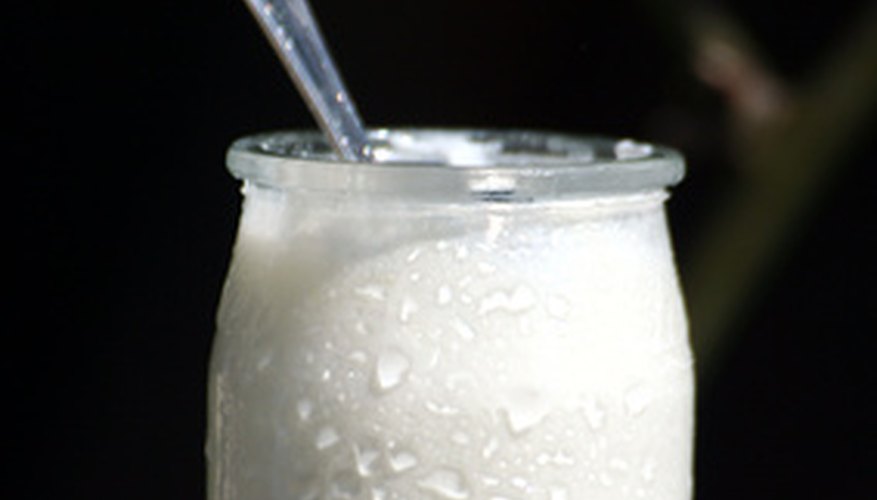Food snobs like to boast about the superior flavour of Bulgarian yoghurt, but few are aware of the actual differences between Bulgarian yoghurt and the "regular" yoghurt that can be found in the U.S. Before you spend extra dollars on a special Bulgarian yoghurt brand, you need to know what the actual difference is.
History
To better understand these differences, it is important to know how yoghurt is made and where it came from. To make yoghurt, you must add bacteria to milk so that it will ferment, which will cause it to thicken and develop a tangy flavour. Yoghurt has been around for about 5,400 years, and it originated in Bulgaria.
The first yoghurts were most-likely created by sheer serendipity. Some farmers left their sheep's milk sitting around, and hours later, came back to discover that the milk had become a thick, creamy liquid. Although it probably didn't look very appetizing, the farmers decided to taste the liquid, and discovered that it was delicious. The kiselo mlyako, or sour milk, grew in popularity, and became the tasty side dish that is still loved by Bulgarians today, according to bacillusbulgaricus.com.
- To better understand these differences, it is important to know how yoghurt is made and where it came from.
- The kiselo mlyako, or sour milk, grew in popularity, and became the tasty side dish that is still loved by Bulgarians today, according to bacillusbulgaricus.com.
The Difference
There is not really much of a difference between "regular" yoghurt and Bulgarian yoghurt. To be considered Bulgarian, the yoghurt must be made with two specific starter bacteria: Lactobacillus delbrueckii subspecies bulgaricus and Streptococcus salivarius subspecies thermophilus.
Here's the catch: most types of yoghurt are made with these two bacteria. The difference is that other yoghurts, including "regular" yoghurt, often add other kinds of bacteria as well, according to bacillusbulgaricus.com.
- There is not really much of a difference between "regular" yoghurt and Bulgarian yoghurt.
- Here's the catch: most types of yoghurt are made with these two bacteria.
Other Differences
There are a few other minor differences, too. What is typically considered "regular" yoghurt is made with cow's milk. Bulgarian yoghurt was originally made with sheep's milk, but it can also be made with buffalo milk or milk from goats or cows. Some of the pickier yoghurt eaters only consider yoghurt "Bulgarian" if the starter bacteria actually came from Bulgaria; however, these bacteria can be grown practically anywhere. Other people give the credit for Bulgarian yoghurt's superior taste to Bulgaria's sunny climate, according to bacillusbulgaricus.com.
- There are a few other minor differences, too.
- Some of the pickier yoghurt eaters only consider yoghurt "Bulgarian" if the starter bacteria actually came from Bulgaria; however, these bacteria can be grown practically anywhere.
Health Benefits
So, no, Bulgarian yoghurt isn't that different from regular yoghurt, but that doesn't mean it doesn't taste great. Also, yoghurt has wonderful health benefits. It can help with gastrointestinal conditions, boost your immune system, discourage vaginal infections, help prevent osteoporosis, reduce the risk of high blood pressure, and it can help you feel fuller, according to Webmd.com.
Decisions
So next time you are at the store or eating out, you shouldn't pass up the chance to try some delicious Bulgarian yoghurt, but it's probably not worth it if the price is much higher just because the cultures came from Bulgaria.
